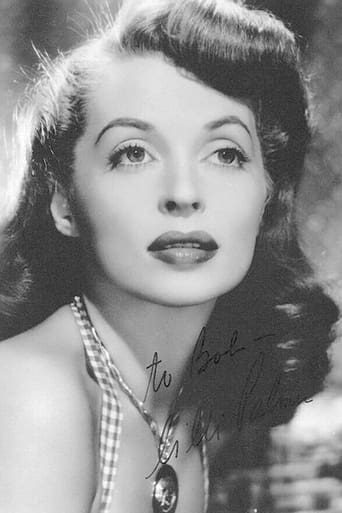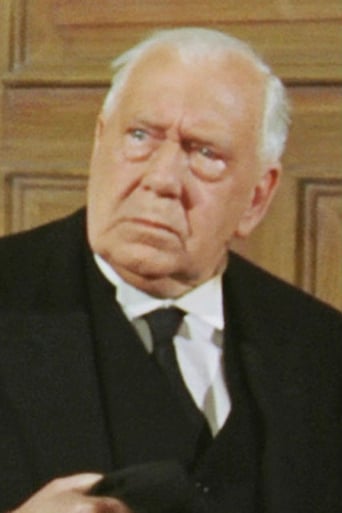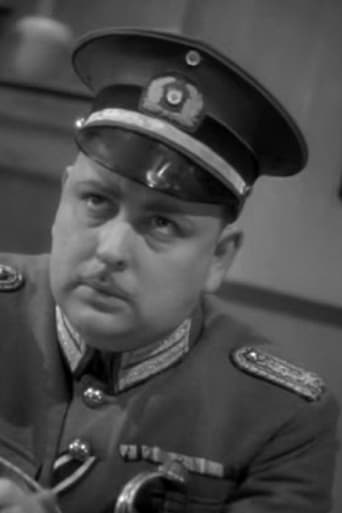Plantiana
Yawn. Poorly Filmed Snooze Fest.
Boobirt
Stylish but barely mediocre overall
Glucedee
It's hard to see any effort in the film. There's no comedy to speak of, no real drama and, worst of all.
mgconlan-1
Though "Crime Unlimited" has quite a different "feel" from what a Warners U.S. production on the same plot premise would have — the American version would have moved a lot faster and would have had wall-to-wall background music (this one doesn't have an underscore at all!) — it's quite a good movie and makes one wish more of the Teddington productions existed. (About 100 were made while Warners owned the studio but only about one-third of them survive — and among the lost is the one most everyone would most want to see: "Murder at Monte Carlo," Errol Flynn's first starring role and the film that convinced Jack Warner that Flynn belonged in Hollywood.) Its debt to the Holmes-Moriarty story and especially to Fritz Lang's Dr. Mabuse films is pretty evident — the villain is a man who, to preserve his incognito, meets his confederates in a secret room and communicates with them only by intercom — but it's well plotted, the denouement makes sense and Esmond Knight is a personable hero, handsome but also quite a good actor who effectively projects the character's combination of courage and naïveté. But the film belongs to Lilli Palmer, whose performance would jump out at you even if you didn't know she would become a star later on; playing the most conflicted character in the story, she makes her rich and complex and brings her dilemmas home. Ralph Ince's direction could have used more of a sense of atmosphere (though it was clear from some of the setups in the villain's headquarters that he'd screened Lang's Mabuse films), and there are a few points where the pace slackened and the film seemed dull, but overall "Crime Unlimited" is quite a good piece of work and the British audiences who saw it in 1935 were probably entertained even while waiting for the big Warners Hollywood production they'd actually paid to see.
theowinthrop
The situation was this. In 1927 (according to Robert Osborne in introducing this and two other films on TCM) a British law insisted that British casts and crews had to be used in films shown in the U.K. by foreign distributors. Warner Brothers - First National got around this by doing films at a British studio they bought at Teddington - so that they would show one of the British films with one of their American films on the same bill. This proved to be acceptable, and they would turn out about 100 films in the 1930s and 1940s, before the studio was closed due to bomb damage from a V-2 rocket. Later it was repaired, but the law was changed and Warners sold Teddington to British interest. It still is in use.Only a third of the Warners Teddington films survive, and Turner Classics showed three last Monday, and three a week before - all shown the first time in the U.S. The first shown on Monday was CRIME UNLIMITED. This melodrama fits nicely into it's London locale, as it deals with a phenomenally successful jewelry gang under one "Merrick" that keeps beating Scotland Yard's attempts to stop it. When they kill an undercover cop (they've also killed three stool pigeons), the Yard knows it must crack the case to regain public trust in it's abilities. The dead detective held onto a clue that mentions "A D 1935 +" on it. Hopefully this taunting clue can be cracked. The Assistant Commissioner (Cecil Parker) decides on another risky scheme. Again, plant a police inspector to spy and uncover the gang inside the gang. But to do this, the police inspector must appear to be a really clever jewel thief - one that "Merrick" would consider for his gang. Shortly afterward we see Esmond Knight as Pete Borden, pulling off a clever jewelry snatch of three expensive bracelets worth 3,000 pounds. He manages to go to a gambling den to try to fence the jewels. There he meets one Natasha (Lili Palmer), who is one of the members of "Merrick"'s gang. He is taken (blindfolded) to Merrick's headquarters, and speaks to him over an intercom. Given little option (join or be killed), he joins the gang.From that point on he acts totally as a member of the gang, but their well organized heists keep going awry. "Merrick" is increasingly suspicious of Borden, as all the mistakes occurred after he joined. The climax is when Borden and Natasha steal a famous necklace at a society party, although Borden's alias is revealed to be false. He escapes. But although Natasha gets a piece of jewelry, it turns out to be a paste imitation. At which point "Merrick" decides Borden (and possibly Natasha) are expendable.It's actually not a bad little mystery, as we keep wondering who is "Merrick", and as we see each of Borden's leads passed to the police get stymied by this criminal genius and his gang. If the conclusion seems a trifle melodramatic (the actor who is Merrick seems too giggly when uncovered - the role called for Henry Daniell if possible for perfect affect). Knight is a feisty little actor (with sufficient English restraint, believe it or not). As for Lili Palmer, Natasha was a good early role as a bad girl who reforms in time. But she did go on to better things - and for awhile so did Knight.
whpratt1
This film is a mystery which concerns a rather sick man who loves to play chess and laughs like a Bela Lugosi who loves to cause all kinds of problems and is being investigated by Pete Borden, (Esmond Knight) as an undercover police man and gets deeply involved with Natasha, (Lilli Palmer) who made her first film debut and adds a great deal of charm to this rather old B picture from England and produced by First National Pictures. If you are interested what woman's hairs styles looked like and the clothes that they wore, this is a great film to enjoy along with the old automobiles that were driven during the Year 1935. Lilli Palmer was so well liked, she eventually came to the United States and married Rex Harrison and the both of them had a great career together.
Neil Doyle
Crisply paced British crime story about a gang of jewel thieves preying on high society is reminiscent of the David Niven/Olivia de Havilland caper RAFFLES. This one is about a man who appears to be a dapper thief eluding Scotland Yard. It turns out he is posing as a thief, but is really a lawman infiltrating a jewelry gang and working for Scotland Yard.LILLI PALMER, looking almost unrecognizable in her first screen role with the usual plucked eyebrows of the '30s style, deftly handles the role of a girl who participates in the gang robberies. All of the Scotland Yard scenes are well handled by a cast of British actors.ESMOND KNIGHT gives an appealing performance as the lawman impersonating a dapper jewel thief in true David Niven style, always fashionably attired. Palmer plays a girl who lives by her wits but wants out of the crime game and wants Knight to quit too. Both of them have never met Maddick, the head of the gang, but fear him. The surprise is in the revelation of Maddick.Summing up: Routine story, very British style, offers nothing new in the way of crime capers.




